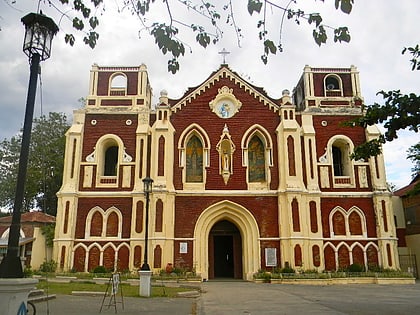Vigan Cathedral, Vigan


Facts and practical information
Nestled in the heart of the UNESCO World Heritage city of Vigan, the Vigan Cathedral, also known as the Metropolitan Cathedral of the Conversion of St. Paul the Apostle, stands as an enduring testament to the Philippines' colonial history and religious heritage. This baroque-style cathedral, with its imposing structure, has become an iconic landmark of the city and a beacon of faith for the local Catholic community.
Constructed in the 16th century, the cathedral has witnessed numerous renovations and reconstructions due to earthquakes and other natural calamities that are common in the region. Despite these challenges, Vigan Cathedral has retained its grandeur and continues to serve as a spiritual center for the Ilocanos, the people of the Ilocos region.
The cathedral's architecture is a blend of European Baroque and unique Philippine earthquake-baroque design, which is characterized by massive buttresses to withstand seismic activity. The facade features intricately carved details, and the interior is adorned with religious art and statues, reflecting the Spanish influence that pervades Vigan's cultural landscape.
Vigan Cathedral is not only a place of worship but also a popular tourist destination. Visitors are captivated by its beautiful altarpieces, the grand pulpit, and the ceiling paintings that narrate biblical stories. The belfry, separate from the main building, offers a panoramic view of Vigan's cobblestone streets and heritage houses.
The cathedral is open to the public daily, and masses are held in both English and Ilocano, the local dialect. The church is particularly vibrant during religious festivities such as Holy Week, when it becomes the center of solemn processions and traditional rituals.
Vigan
Vigan Cathedral – popular in the area (distance from the attraction)
Nearby attractions include: Quirino Stadium, Quema House, Bantay Church, Crisologo Museum.






